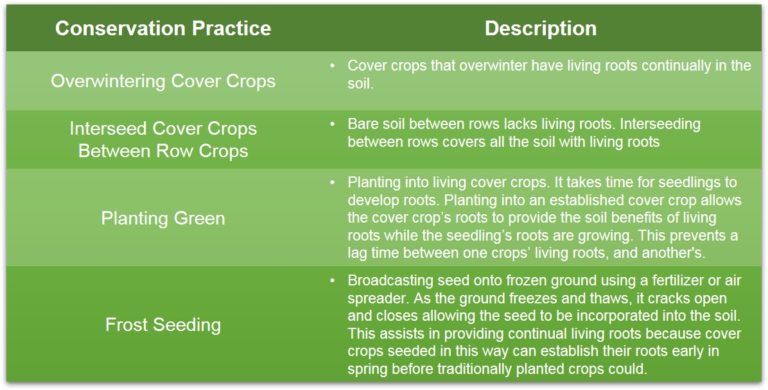Continual Living Roots
Image Credit: Wolfgang Ehrecke from Pixabay
Continual Living Roots
Continual living roots refers to having living roots in the soil year-round.
(South Dakota Soil Health Coalition)
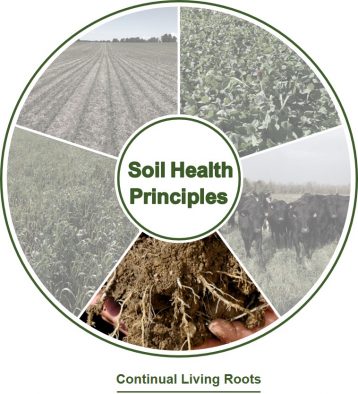
Continual Living Roots
Continual living roots refers to having living roots in the soil year-round.
(South Dakota Soil Health Coalition)
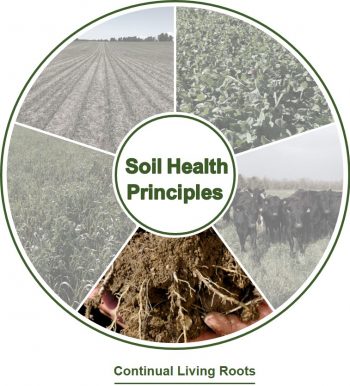
Importance
Plants (and their living roots) are the energy source for healthy soil. Natural systems always have living roots present. These plants are harvesting sunlight, converting it into sugars and releasing exudates (chemical compounds) through their roots into the soil. These exudates increase the efficiency of nutrient transfer from the soil to plant roots.
If the soil doesn’t have a living root over winter, it will take time to redevelop these relationships in the spring, potentially slowing down transfer of needed nutrients.
Having continual living roots in the soil:
- Supports the soil lifecycle by feeding soil biology carbon through the process of photosynthesis.
- Captures Unused Nutrients – Most years there are unused nutrients in the soil. Having a living root at all times captures and ties up the nutrients in the soil, making more nutrients available for the next cash crop.
- Provides Erosion Control – Live roots and their living plants cover and hold the soil in place, protecting it from erosion.
- Assists with Weed Control – Having a living root in the soil means having a live plant aboveground. This plant can provide residue for weed control during the next cash crop.
- Offers Grazing Opportunities – Live roots mean live plants aboveground. These plants can be used for grazing livestock year-round.
- Improves Infiltration– Roots break up soil compaction as they push through the soil. This helps build soil aggregates and pore spaces, which improves soil infiltration.
- IMPROVES SOIL HEALTH!
- (NRCS – Continual Live Root)
- Supports the soil lifecycle by feeding soil biology carbon through the process of photosynthesis.
- Captures Unused Nutrients – Most years there are unused nutrients in the soil. Having a living root at all times captures and ties up the nutrients in the soil, making more nutrients available for the next cash crop.
- Provides Erosion Control – Live roots and their living plants cover and hold the soil in place, protecting it from erosion.
- Assists with Weed Control – Having a living root in the soil means having a live plant aboveground. This plant can provide residue for weed control during the next cash crop.
- Offers Grazing Opportunities – Live roots mean live plants aboveground. These plants can be used for grazing livestock year-round.
- Improves Infiltration– Roots break up soil compaction as they push through the soil. This helps build soil aggregates and pore spaces, which improves soil infiltration.
- IMPROVES SOIL HEALTH!
- (NRCS – Continual Live Root)
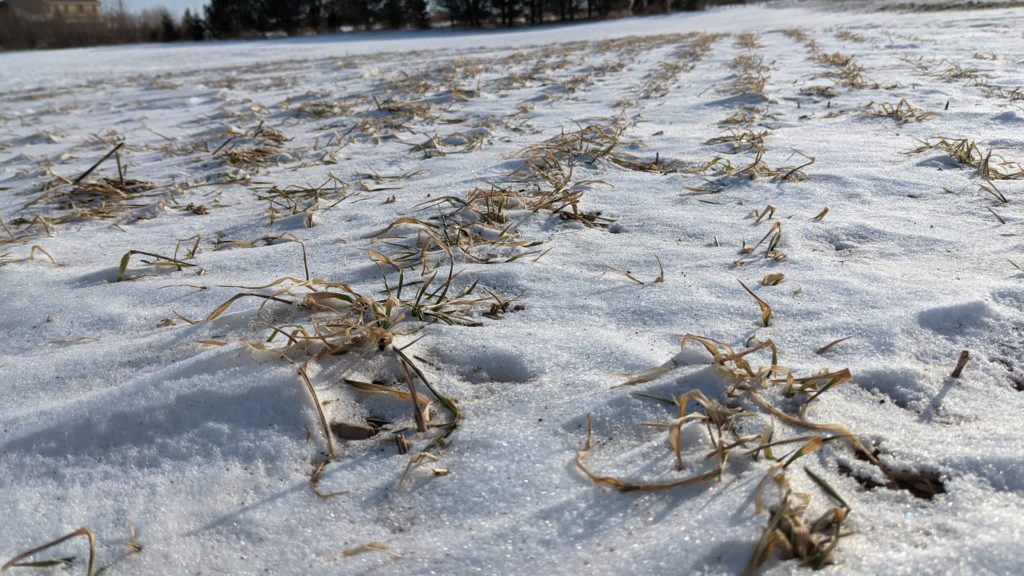
Look closely and you’ll see these cover crops are still green and alive, and their roots are living too. Those living roots provide a number of benefits, but especially holding the soil in place even throughout the winter. This helps control erosion, especially from the winter winds, which can blow soil off the field (see image below).
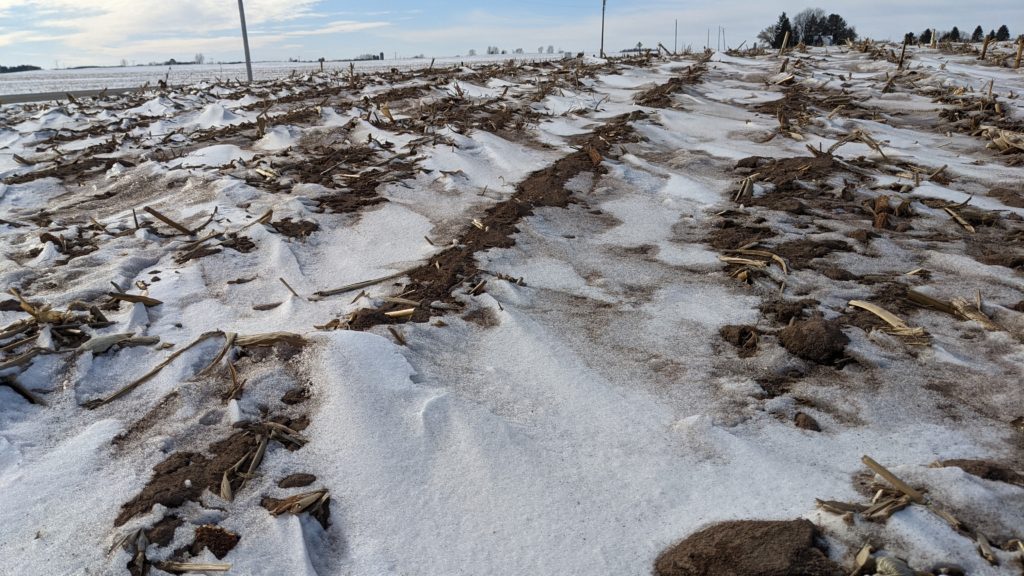
One of the most visible problems with having no roots in the soil is that it’s extremely vulnerable to erosion. Pictured here, soil is being blown off the field, or suffering from wind erosion, as you can tell by the soil blown over top of the snow.
Our Farmers at Work
Our Farmers at Work
The Upper Fox-Wolf Demonstration Farm Network farmers are working to increase living roots in their fields.
The Upper Fox-Wolf Demonstration Farm Network farmers are working to increase living roots in their fields. Learn how they do this in the chart below.
To do this, they use

